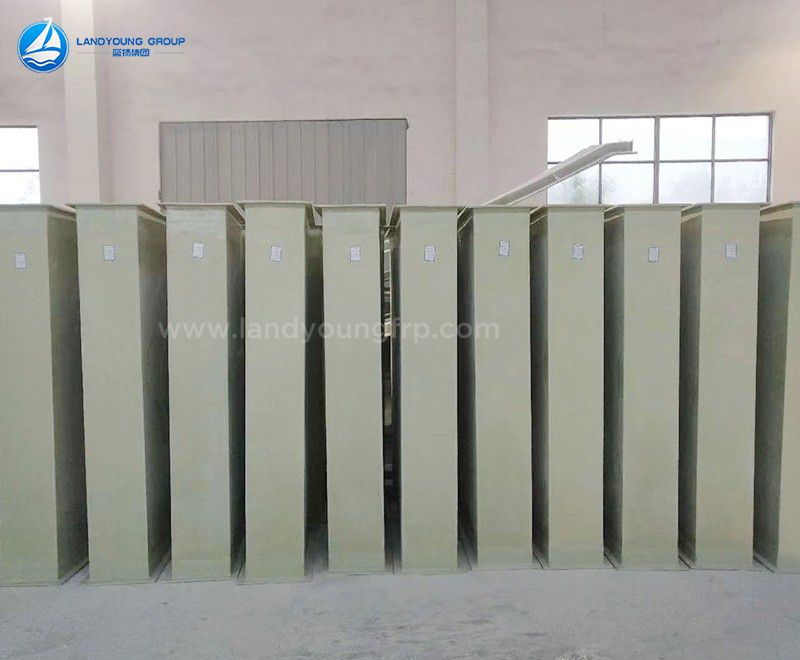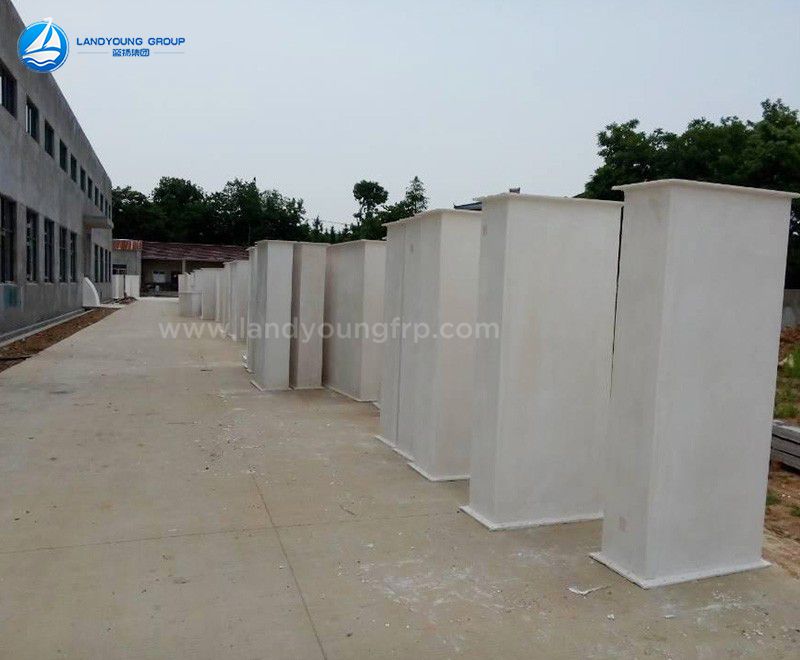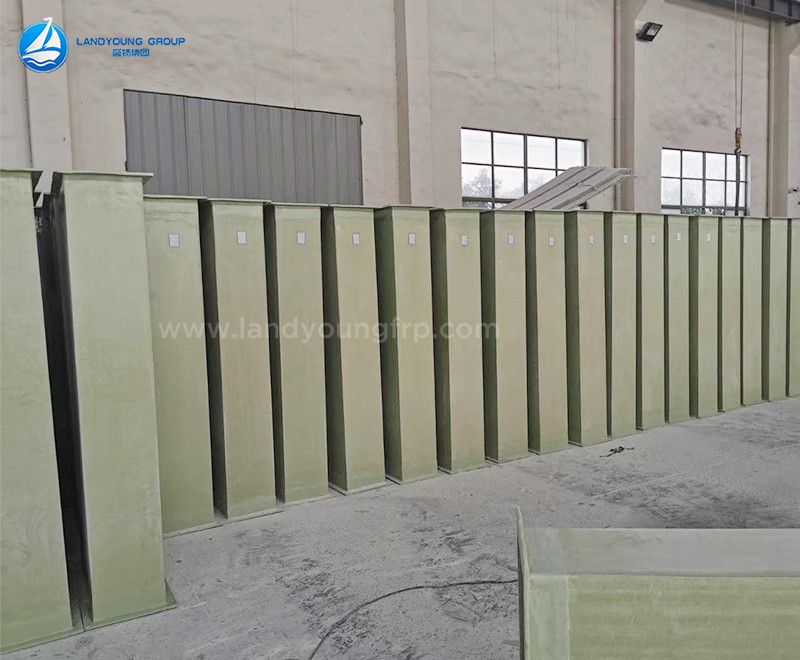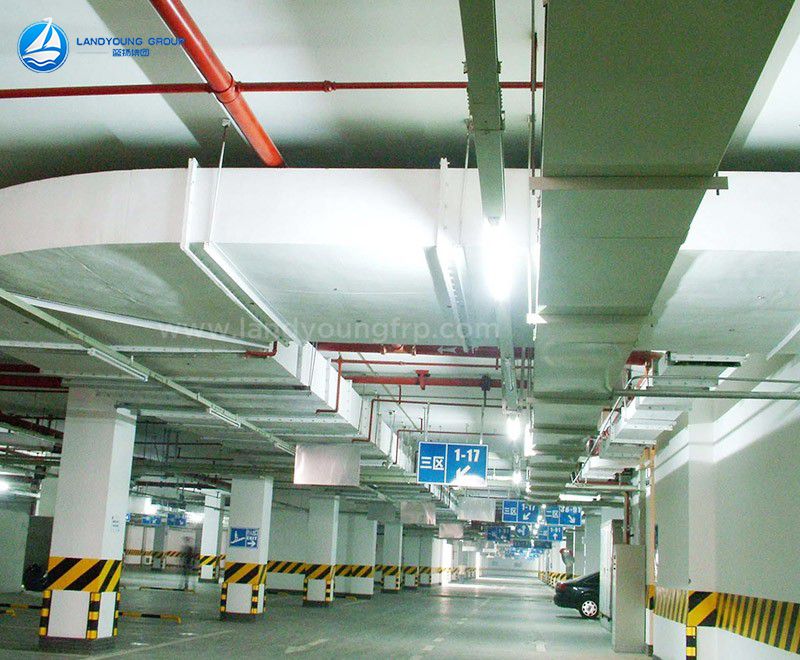sales@landyounggroup.com
+86 133 2318 2255




FRP duct (GRP duct) is entwined with glass and resin fibers, and is used for direct underground burial to serve any commercial application.
FRP ductwork, also known as Fiber Reinforced Polymer ductwork or Fiberglass Reinforced Plastic ductwork, is a type of ventilation system used in industrial applications. It is constructed using a composite material composed of fine glass fibers embedded in a polymer matrix, typically epoxy resin. FRP Duct can be round or rectangular and be designed for wind, seismic, snow, pressure, vacuum, and temperature to meet customer's specifications and requirements. FRP duct offers numerous advantages over traditional ducting materials such as galvanized, stainless steel and PVC coated metals.
● Light Weight
● High Strength
● Non-Conductive
● Corrosion Resistant
● Long service life
● Easy Installation
● Wastewater Treatment Plants
● Petrochemical Plants
● Laboratory Exhaust
● Glass and Metal Foundries
● Clean Rooms
● Plating & Metal Finishing Facilities
● Micro-Electronic Plants
● Pulp and Paper Industry
● Aerospace Industry
● Automotive Industry
● Marine Exhaust Systems
● Food Processing Facilities
● Pig& chicken house
We offer quality frp duct product solutions. Our FRP piping is used in many industrial, water, wastewater, underground, industrial/commercial and HVAC applications where corrosion is a problem.
Unlike metal piping, our fiberglass piping does not corrode. It can be buried and installed in the harshest climatic conditions. It can withstand extreme cold. It is ideal for industrial and commercial locations where chemicals can attack normal piping, such as ponds, wastewater treatment plants, etc.
Our corrosive composite FRP piping system has a Class 1 flame rating. Our hybrid FRP piping system has a Class 1 flame rating for the internal resin and a Class 1 flame and smoke rating for the external resin. Our FRP duct systems have a flame and smoke rating of Class 1 for the entire system.
A: Corrosion resistance: FRP ductwork is highly resistant to corrosion, making it ideal for industries dealing with corrosive gases or environments.
Lightweight and easy installation: FRP ductwork is lightweight, making it easier to handle, transport, and install compared to heavier alternatives like metal ductwork.
Exceptional strength and durability: Despite its lightweight composition, FRP ductwork is strong and durable, capable of withstanding demanding industrial conditions.
Excellent thermal insulation: FRP ductwork exhibits excellent thermal insulation properties, contributing to energy efficiency within industrial facilities.
Design flexibility: FRP ductwork can be customized to accommodate complex layouts, tight spaces, and unique specifications.
A: FRP ductwork finds extensive use in various industries, including chemical processing plants, pharmaceutical manufacturing facilities, wastewater treatment plants, pulp and paper mills, food processing plants, semiconductor manufacturing facilities, and power generation plants.
A: The manufacturing process of FRP ductwork involves several steps:
Design and Engineering: Skilled engineers and designers create custom ductwork solutions tailored to specific project requirements.
Materials Selection: Premium-grade raw materials, including high-quality glass fibers and resin systems, are selected.
Fiber Reinforcement: Glass fibers are impregnated with the chosen resin system, ensuring uniform distribution and optimal bonding.
Lamination: The impregnated glass fibers are layered onto a mold or mandrel according to desired specifications.
Curing: The composite material undergoes a curing process, subjecting it to controlled temperature and pressure conditions.
Finishing and Quality Control: After curing, the ductwork is inspected, trimmed, and finished to meet precise specifications, ensuring high quality.
A: FRP ductwork offers several advantages over traditional metal ductwork. It is lighter, easier to install, and highly resistant to corrosion. FRP ductwork also provides excellent thermal insulation properties and offers greater design flexibility. Additionally, FRP ductwork is known for its exceptional strength and durability, making it a reliable choice for demanding industrial applications.
Landyoung is a manufacturer of FRP ducts, providing high-quality solutions for industrial applications. With their expertise and dedication to excellence, Landyoung offers a wide range of FRP ductwork products that meet the demanding requirements of various industries.